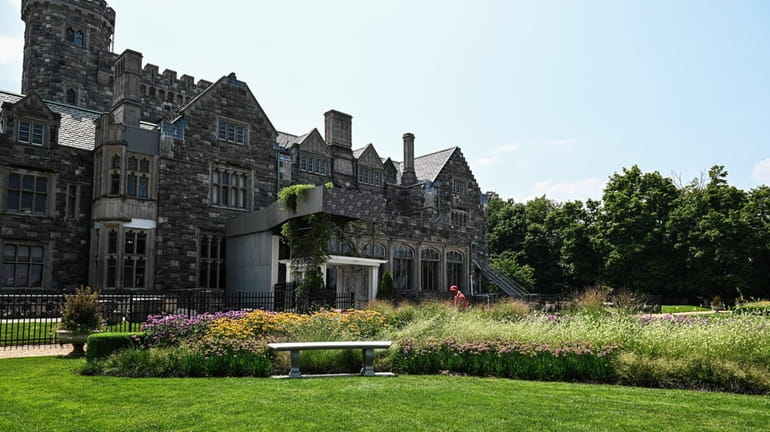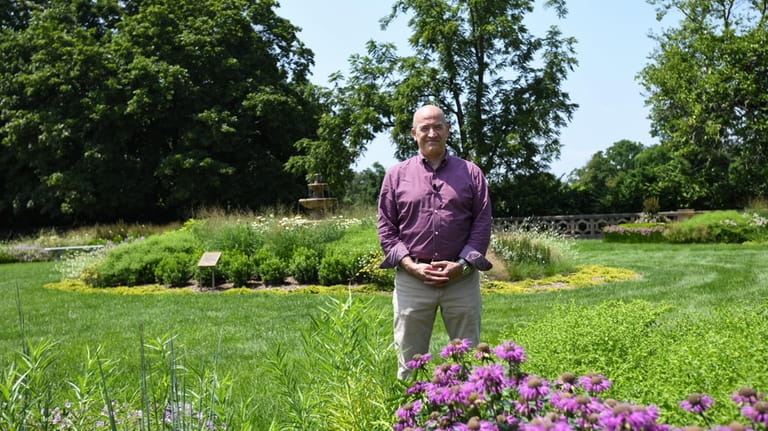Sands Point Preserve adds new sensory garden

Hempstead House overlooks the native garden at the Sands Point Preserve. Credit: Dawn McCormick
When the 1,500 rose bushes at the Sands Point Preserve succumbed to a virus, property staff decided to uproot the plants to make room for a sensory garden. The garden made its debut in August, two summers later, full of flowering plants selected specifically to attract pollinators and create a relaxing space for visitors.
What was once a bed of roses is now home to echinacea, or coneflowers, enticing butterflies; ornamental grasses attracting small birds; and hydrangeas providing shelter for nesting animals.
“We’re losing these pollinators at a kind of catastrophic rate,” says Signe Nielsen, an architect at the New York-based firm that designed the space, Mathews Nielsen Landscape Architects.

Executive director Jeremiah Bosgang in the native garden at Sands Point Preserve. Credit: Dawn McCormick
Nielsen says the plants were chosen in hopes that the garden will aid in the survival of such species.
Sands Point Preserve
WHEN | WHERE 11 a.m. to 7 p.m. Wednesday trough Saturday ; 9 a.m. to 7 p.m. Sunday through Sept. 4.127 Middle Neck Rd., Sands Point; 516-571-7901
COST $15 per car, members free
"If you plant for pollinators, they’ll find their way to the flowers, travel from plant to plant, fertilize other plants and make them healthier for all different species,” Nielsen says.
With its natural appearance, the native garden also provides a sensory experience. Varying fragrances and textures can be found as you walk through.
“You can see the heights and colors of the plants, and the ways they all sway in the breeze differently," Sands Point Preserve executive director Jeremiah Bosgang explains.
Marcel Kazickas, a painter/artist from Sands Point, recently visited the garden for inspiration, describing it as "calming and relaxing."
"I love the layers, textures, height and colors in the garden. They're soft and natural looking. As an artist, I love the lavenders and gorgeous greens. They're like Romeo and Juliet," Kazickas says.
Flowers and plants in the garden were chosen to complement each other throughout the year, with different buds expected to sprout in late fall, spring and summer. “If you know which plants take their turns during each season, you can really orchestrate a symphony of looks, feels and smells,” Bosgang says.
The experience will change come fall. "The dried grasses and dried seed heads in the hydrangeas will begin to rustle in the wind. The dried leaves will still look attractive after the frost,” Nielsen says.
The nature garden’s message travels far beyond the preserve. Those who designed it hope it will inspire families to plant their own nature gardens in their yards, even in the fall. In fact, Bosgang sees nature gardens as a metaphor for diversity among flowers as well as people. “Every plant has its own purpose,” he says, “and they’re living together harmoniously.”
